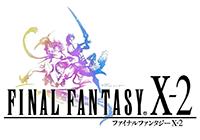Final Fantasy X-2 (PlayStation 2) Review
By Coller Entragian  22.12.2017
22.12.2017

Final Fantasy as a franchise was known for being dour and melodramatic, so when Final Fantasy X-2 came out and it was such an upbeat and feel-good game, with fan servicey scenes, pop songs, dancing and many comedic shenanigans, fans at the time didn't know what to make of it. It was easy for most people to write it off at face value and scoff at the very obvious Charlie's Angels influences, with its extended dance sequences and "girl power" vibes. Who knew that of all the entries in the series, it would be this one that would push the gameplay forward by incorporating non-linear gameplay and branching story paths?
Final Fantasy has typically been very linear and rarely allows for any actual role-playing. As Yuna in Final Fantasy X-2, players can make the choices she would be given that would affect the plot and would take the story in radical directions. This was also the first time a Final Fantasy had New Game Plus, which only increased replay value and would encourage users to explore the alternate story paths, leading to six endings. It is a huge shame that Final Fantasy X-2 is one of two entries in the franchise that made such a committed attempt to give players so much choice and options for role-playing.
Final Fantasy X-2 was not only a very robust adventure that manages to explore both sides of conflicting factions, but it also gives Yuna a huge amount of growth as a character. Most people wrongfully assume that this game was pure fan service (it did have its share), but giving it a fair look will find that this entry has some of the more nuanced character writing for a protagonist.

Yuna began as a reserved naïve girl who was almost like a nun and a bit of a doormat... Then grew into a sky pirate and had the most beautiful scenes to ever depict a moment of self-realization and how full of regret she is, just because people died for her when she was a summoner. They are by far the most poignant scenes in the franchise as a whole, and ranks as one of the most tear-jerking finales in a Final Fantasy. This was one of the few entries that bothered to have a shade of grey and not to depict the antagonists as complete monsters, and the fact that the gameplay allows Yuna to explore the multiple facets only enriches the experience.
The job system from previous Final Fantasy games is back, and in a big way, since now characters can basically choose a loadout of specific jobs to take with them into battle. As far as strategy goes, Final Fantasy X-2 has it in spades and holds up well today. Sure, some people may be put off by the sensual, Sailor Moon-like transformations, but it is all in good fun! The actual balancing and amount of planning users have to put into the battles in this game are some of the best the entire franchise has ever had. Since the party was now able to switch job classes on the fly, encounters would become more varied, and gameplay was just much smoother than what was seen before in other Final Fantasy games with job class systems. Combat was so much more flexible than it had ever been.
FFX-2 is an entry in the series to be adored, but it does carry some issues as a result of being made up of assets from its predecessor, such as how the world and environments are disjointed between load screens. Paine is also worthless as a character, where it is painfully obvious that she is a Lulu understudy, and the method for achieving 100% completion is downright cruel.

Cubed3 Rating
Great - Silver Award

Sadly, most fans skipped this one due to its girly exterior. The fact is the timing was bad and most gamers were just not ready for an RPG like Final Fantasy X-2. Anyone who is interested in an open-ended, non-linear RPG with deep character customization and a ton of replay value will find that Yuna's journey is more than cute outfits and pop songs... It is a profound quest for self-realization.

![]() 8/10
8/10
![]() 0
(0 Votes)
0
(0 Votes)
 Out now
Out now  Out now
Out now  Out now
Out now  Out now
Out now Comments
Comments are currently disabled

 Sign In
Sign In Game Details
Game Details Subscribe to this topic
Subscribe to this topic Features
Features





 Top
Top

